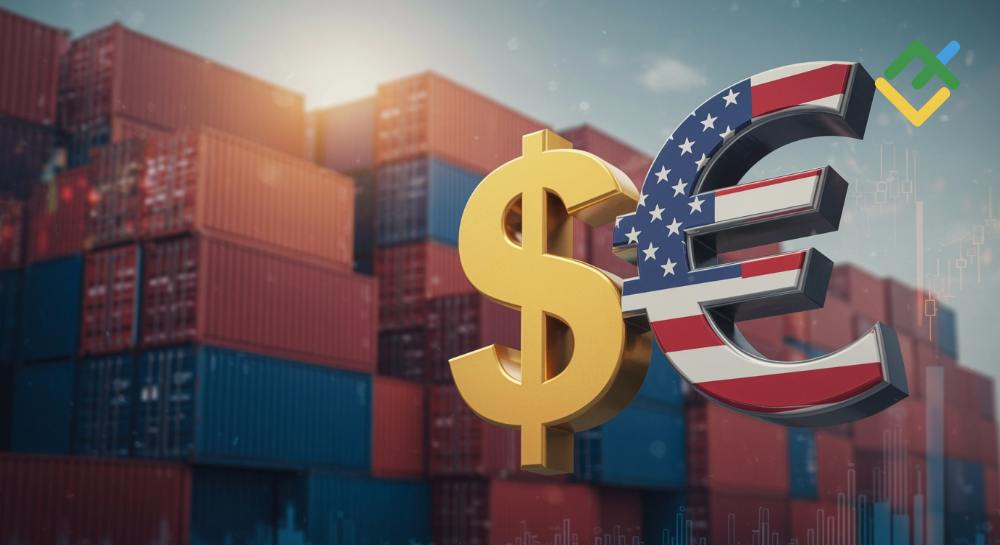The oil price is more than just a number on the energy ticker—it’s a force that shapes entire economies. A spike or drop in oil price has far-reaching consequences, especially for currency markets. When the oil price rises sharply, some currencies gain strength, while others weaken rapidly. These movements can create major opportunities—and risks—for forex traders.
The effect of oil prices on forex markets is immediate. Countries that export oil often see their currencies appreciate. Meanwhile, oil-importing nations suffer trade deficits, inflation pressure, and currency depreciation. Currencies affected by rising oil prices behave differently depending on their energy balance, monetary policy stance, and market perception.
Understanding which currencies move and why during oil price changes is essential for any forex trader. Let’s explore the winners, losers, and the complex relationship between petro-currencies and exchange rates.
The Basics: Why Oil Price Changes Influence Currency Markets
Oil is priced in US dollars globally. That alone gives the oil price enormous influence on forex. But beyond that, the actual economic relationship between a country’s trade balance and its energy exposure determines currency direction.
When the oil price rises:
- Exporters earn more foreign exchange, which supports their currencies.
- Importers pay more for fuel, worsening trade balances and weakening their currencies.
- Inflation pressures build up, forcing central banks to react.
- Risk sentiment often deteriorates, affecting emerging markets more severely.
These reactions play out differently based on each country’s exposure. Some currencies have become known as petro-currencies because they are tightly linked to oil exports.
Petro-Currencies That Rise With Oil Price Spikes
Petro-currencies and exchange rates are closely linked. When the oil price increases, these currencies usually rise due to stronger economic outlooks and trade surpluses.
1. Canadian Dollar (CAD)
Canada is one of the largest oil exporters to the United States. Higher oil prices directly improve Canada’s trade balance and GDP.
Example: In early 2022, when oil surged above $110 per barrel due to Russia’s invasion of Ukraine, the Canadian dollar gained over 2% against the USD in a month.
2. Norwegian Krone (NOK)
Norway exports North Sea oil. Rising oil prices increase government revenues and support the Krone.
3. Russian Ruble (RUB)
The Ruble was historically a petro-currency. Despite sanctions, the correlation still exists, especially for non-Western trading partners.
4. Brazilian Real (BRL)
Brazil benefits from higher oil and commodity prices. Though volatile, the Real often rises when global demand pushes oil higher.
5. Mexican Peso (MXN)
Mexico is a medium-sized oil producer. When oil prices rise, it tends to support the Peso, particularly in risk-on market conditions.
These currencies benefit directly from the oil price moving upward. Their central banks may even intervene less during oil booms, allowing appreciation to help control inflation.
Currencies That Fall When Oil Prices Rise
Not all countries are energy-rich. Many depend heavily on oil imports. When the oil price rises, their import bills swell, inflation increases, and their currencies fall.
1. Indian Rupee (INR)
India imports over 80% of its oil. Higher oil prices worsen the trade deficit, increase inflation, and pressure the central bank to act.
Example: In 2023, when Brent crude rose from $70 to $95, the INR weakened to a record low of 83.3 per USD due to rising import costs.
2. Japanese Yen (JPY)
Japan relies heavily on imported energy. Rising oil prices reduce its trade surplus and increase cost pressures, weakening the Yen.
3. Turkish Lira (TRY)
Turkey’s fragile economy and dependency on energy imports make it highly sensitive. Oil price surges often lead to sharper depreciation.
4. South Korean Won (KRW)
South Korea’s manufacturing and export-driven economy suffers when oil becomes expensive. The KRW tends to weaken in oil bull markets.
5. Philippine Peso (PHP)
The Philippines is a major oil importer. Higher prices increase inflation and reduce purchasing power, leading to a weaker currency.
These currencies are often at the mercy of oil price swings. They are also more vulnerable to capital outflows when energy-driven inflation builds.
Inflation and Central Bank Response to Oil Price Spikes
Oil price shocks are a fast-track to higher inflation. Energy costs filter into transportation, food, and manufacturing sectors. As inflation rises, central banks are forced to act—either with interest rate hikes or currency interventions.
How Central Banks React:
- If inflation becomes unmanageable, rate hikes may follow. This can support the currency in the short term.
- If the bank prioritizes growth or fears recession, it may avoid tightening. That weakens the currency further.
This inflation and central bank response cycle is especially aggressive in emerging markets, where food and fuel make up a higher share of consumer spending.
Example:
In 2022, oil-induced inflation pushed the Reserve Bank of India to hike rates despite a slowing economy. While this supported the Rupee temporarily, high oil prices kept pressure on.
Petro-currencies and exchange rates are also shaped by central banks. Countries like Canada or Norway may tolerate stronger currencies to cool inflation during an oil boom.
The U.S. Dollar and Oil: A Complicated Relationship
The US dollar plays a dual role. It’s the primary invoicing currency for oil and also a safe-haven asset. As a result, the oil price and USD often move in opposite directions—but not always.
When oil prices rise:
- Oil-importing countries need more dollars, increasing USD demand.
- Safe-haven flows into USD may increase during geopolitical oil shocks.
- The Federal Reserve’s inflation response affects USD strength.
In recent years, the U.S. has become a net energy exporter. This reduces the old inverse correlation between the dollar and oil price. Still, in most scenarios, a rising oil price weakens the USD—unless geopolitical fear drives it up.
Example:
During the 2019 Saudi oil facility attacks, both the oil price and the USD rose as investors fled to safety.
Market Sentiment and Volatility During Oil Price Shocks
The effect of oil prices on forex isn’t always about fundamentals. Market sentiment often dominates in the short term. Rising oil prices can trigger:
- Risk-off sentiment, hurting emerging market currencies
- Volatility spikes in oil-linked currency pairs
- Flight to safety in USD, CHF, and gold
Currencies affected by rising oil prices are not always predictable. Traders must watch news headlines, geopolitical developments, and OPEC decisions closely.
Volatile Examples:
- After the 2023 Iran-Israel tensions, oil surged 15% in a week. The Indian Rupee dropped sharply, while the USD and gold rose.
- Mexican Peso and Brazilian Real strengthened as oil exports gained—but only after initial risk-aversion faded.
Forex markets often price in oil events faster than equity markets. Traders use oil as a leading signal for currency pairs like USD/CAD or USD/INR.
Summary Table: Currency Reaction to Rising Oil Prices
| Currency | Oil Exposure | Likely Impact When Oil Rises |
|---|---|---|
| CAD (Canada) | Exporter | Strengthens |
| NOK (Norway) | Exporter | Strengthens |
| RUB (Russia) | Exporter | Strengthens (sanctions permitting) |
| BRL (Brazil) | Exporter | Strengthens |
| INR (India) | Importer | Weakens |
| JPY (Japan) | Importer | Weakens |
| TRY (Turkey) | Importer | Weakens sharply |
| KRW (South Korea) | Importer | Weakens |
| PHP (Philippines) | Importer | Weakens |
| USD (United States) | Mixed | Mixed, depends on Fed response |
Conclusion: Why Oil Price Still Reigns in Forex
The oil price remains one of the most influential variables in global forex markets. Whether it’s due to geopolitical shocks, supply disruptions, or demand booms, currency traders cannot afford to ignore it.
Petro-currencies and exchange rates move almost in sync. Rising oil prices support exporters and pressure importers. But beyond trade flows, inflation and central bank response add complexity. Traders must monitor how oil-driven inflation reshapes interest rate paths.
Ultimately, oil price trends don’t just drive energy markets—they steer currency values, shape monetary policy, and create some of the most tradeable opportunities in forex.
Click here to read our latest article Social Media Hype and Market Volatility Explained for Traders
This post is originally published on EDGE-FOREX.





